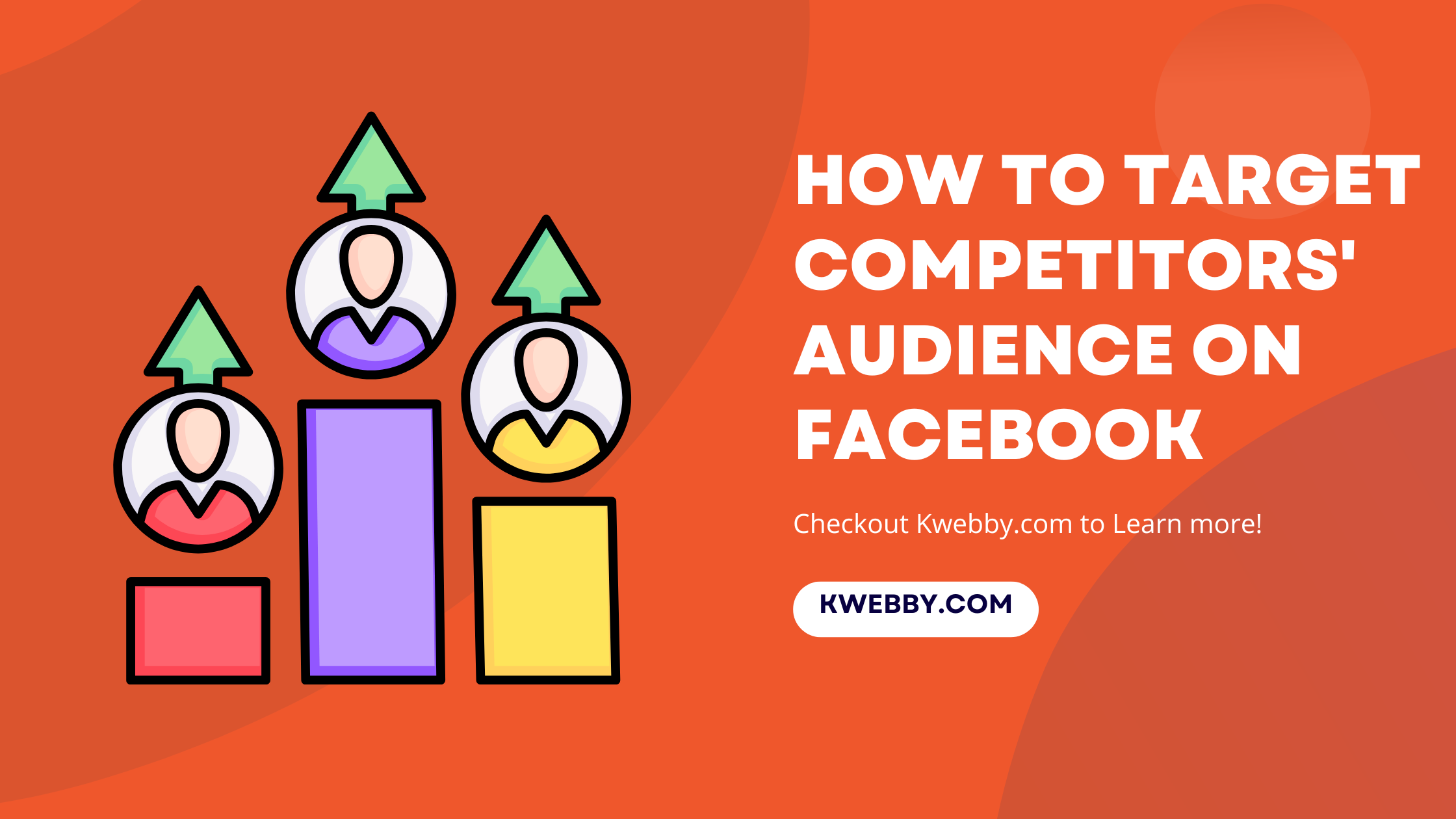Starting off with building a Facebook fan base can seem daunting. However, understanding how to target the audience of your competitors on Facebook is a smart move.
Unfortunately, Facebook won’t hand you a list of your competitor’s fans for targeting with organic posts and ads. It’s not that straightforward.
Due to strict privacy regulations, Facebook does not allow for the direct targeting of competitors’ audiences. Yet, this doesn’t mean there is no way to reach them. You must put in more effort by utilizing available metadata about your competitor’s audience, such as their interests, demographics, and locations.
Additionally, investing time to explore and extract engagement and profile information from competitor Pages can be fruitful.
Before we explore the methods for targeting fans of other pages on Facebook, it’s crucial to understand the reasoning behind this strategy.
Why Target a Competitor’s Audience
The effectiveness of any organic or paid marketing effort on social media is directly tied to the precision of your audience targeting. Aiming at the incorrect audience can lead to squandered resources and lackluster results in both engagement and conversion rates.
Conversely, identifying and targeting the right audience with well-crafted content that resonates with their preferences can significantly:
Boost your follower count
Unearth more lead opportunities
Secure a higher rate of conversions
Enhance the efficiency of your advertising efforts
Minimize advertising expenditures
Leveraging accurate data is crucial in this endeavor. The precision of Facebook’s targeting improves with an increase in your follower base, making early recommendations potentially broad and imprecise. Hence, initiating with a focus on your competitors’ audience—particularly those with interests aligned with your offerings—provides a strategic advantage.
This approach not only grants access to a vetted pool of potential customers but also lays the groundwork for expanding your own audience base.
How to Target competitors audience on facebook
Ideally, you could use data analytics tools to directly target supporters on your competitor’s Facebook page. However, Facebook’s privacy regulations prohibit such activity. As a result, you’ll need to rely on traits like hobbies.
If you’re ready to understand how to target a competitor’s Facebook audience, follow these steps.
Define Your Audience
Initiating the process requires the establishment of your ideal target audience. Crafting a detailed customer profile or avatar, representative of the individuals you aim to reach, is an essential first step.
This foundational work facilitates the identification of competitors with overlapping target groups, thereby ensuring your efforts are focused on the most relevant adversary audiences. Understanding your ideal customer deeply is also pivotal for demonstrating that your offerings surpass those of your competitors in value.
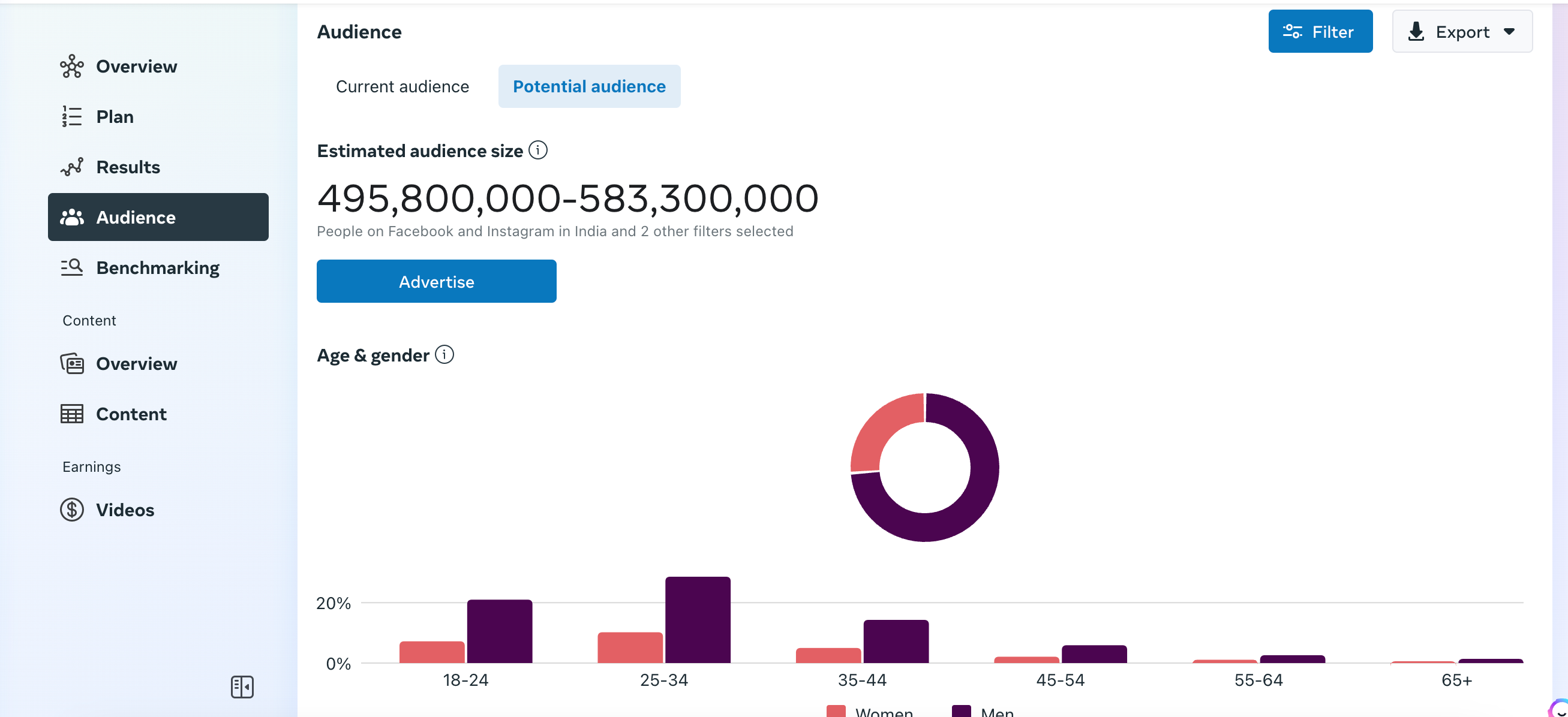
For businesses with an existing clientele, the Meta Business Suite’s free Audience Insights tool becomes an invaluable asset. It offers a window into who is interacting with your Facebook Page and sheds light on their content preferences based on engagement statistics.
For those at the starting blocks, without a considerable audience, pinpointing your target group might seem challenging.
Nevertheless, this task becomes more manageable with ongoing competitor research, allowing for continuous refinement of your customer avatar.
This approach not only optimizes your Facebook advertising strategy but also enhances the efficiency of ad delivery by ensuring you’re targeting users most likely to convert, using tools like Facebook’s lookalike audiences feature, interest targeting, and audience insights.
Find Your Competitors’ Pages
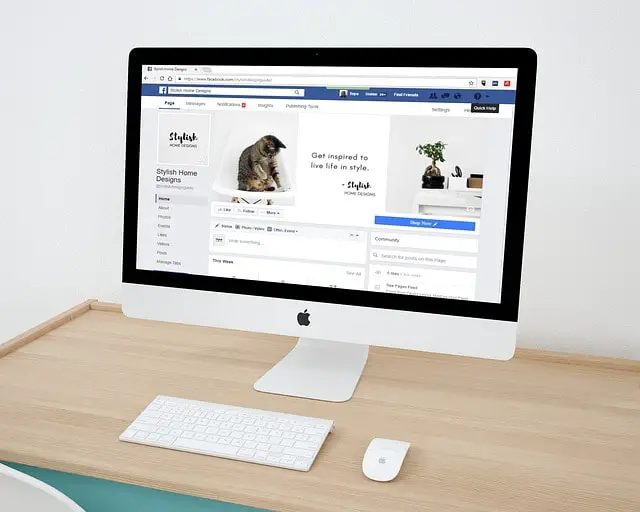
After defining your target audience and identifying your competitors, the next step is to locate the Facebook Pages of the most pertinent competitors. Utilise the following strategies to streamline this process:
Start by thinking about well-known brands and influencers within your sector. Enter their names into Facebook’s search bar to locate their Pages.
Use keywords associated with your target audience for searches on Facebook to discover relevant Pages.
Explore the “Related Pages” feature and observe the Pages liked by your competitors’ fans for additional insights.
Investigate the Community section of your competitor’s Facebook Page to see their Top Fans and the Pages their fans like.
Employ Facebook Audience Insights to identify common interests shared between your audience and that of your competitors, enhancing your audience targeting strategy.
The Insights Benchmarking tool available on Facebook can provide valuable insights into a competitor’s audience. This tool suggests Pages similar to yours, allowing you to explore these competitors further for effective ad targeting.
Incorporating these methods into your Facebook advertising strategy enhances your ability to reach potential customers, tailoring your ad campaigns to engage those most interested in your products or services.
Use Potential Audience Insights
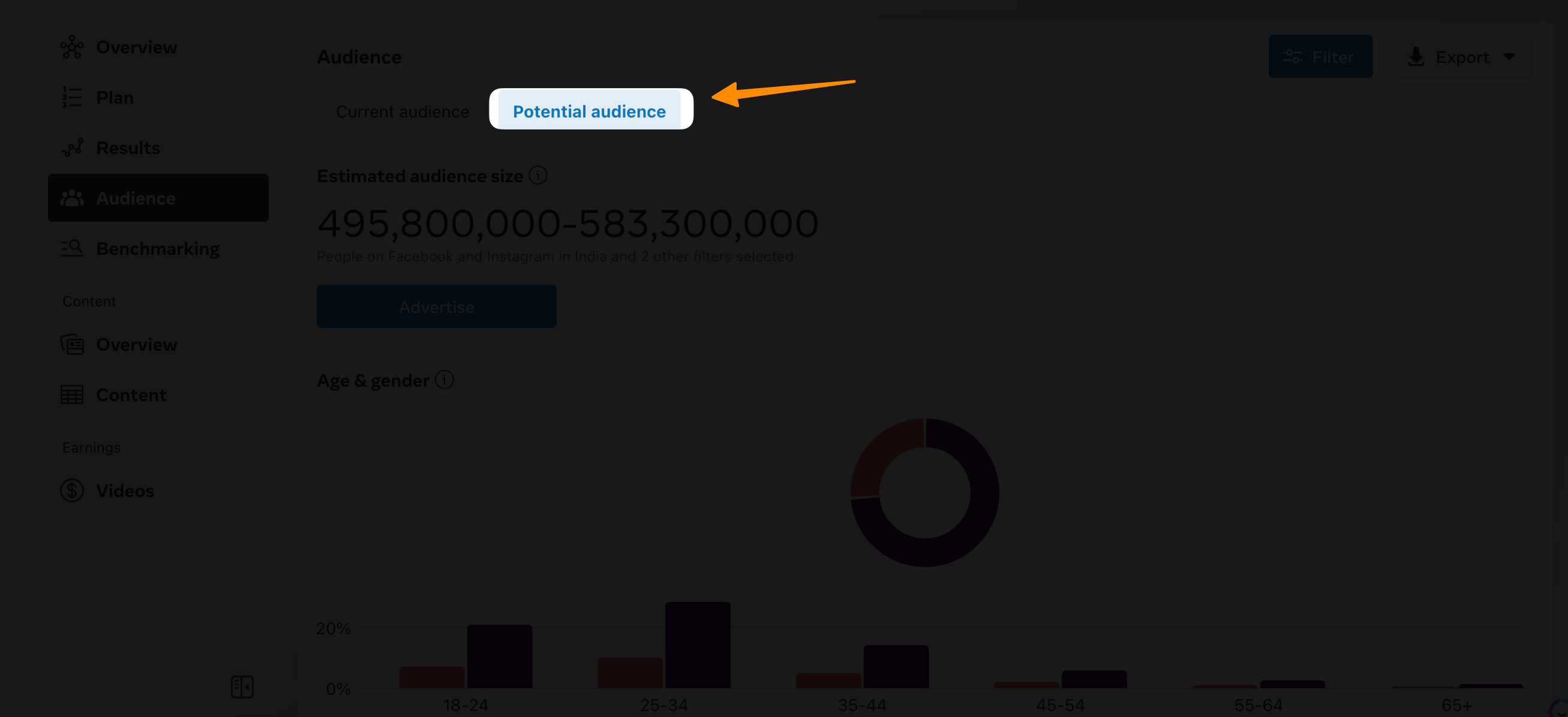
Delving into the Meta Business Suite’s Audience Insights can offer strategic intel on your competition’s Facebook presence, including insights on both your direct competitors and their followers.
This exploration allows for the extraction of keen insights by deploying filters to parse through data more relevant to your specified target audience.
Essential aspects to concentrate on include:
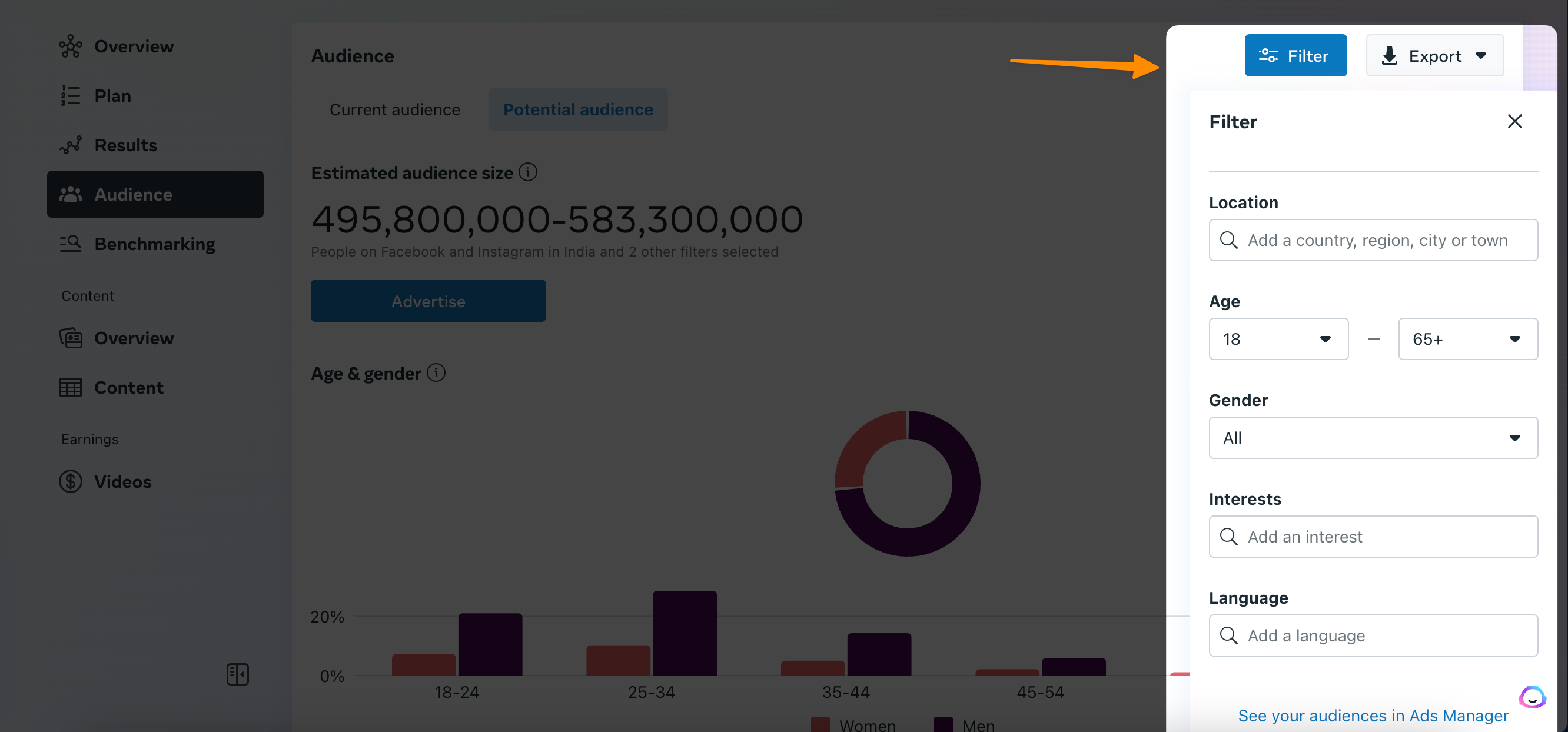
Interests: This encompasses sectors, types of companies, and professions that fans of your competitors have shown an affinity for.
Demographics: Key demographic data such as age group, gender, lifestyle choices, education levels, relationship status, job roles, and household sizes are vital.
Location: Identifying the geographical distribution of your competitors’ Facebook Page owners provides a strategic alignment in targeting.
The platform presents easily interpretable graphs showcasing your filtered choices and gives a peek into potential audience size estimates, meshing with interest targeting, demographic targeting, and geographical targeting to tailor your advertising strategy better.
Utilizing this insight can significantly refine your approach in building custom audiences or lookalike audiences, enhancing audience targeting effectiveness.
A dynamic feature includes a clickable overview of common interests among the potential audience, revealing businesses—including possibly your direct competitors—that resonate with these interests.
Clicking through to a competitor’s Facebook Page from this list opens avenues for in-depth research, offering a foundation to craft more directed and compelling Facebook ads.
Research Individual Pages
Exploring another angle for harnessing your competitor’s audience on Facebook requires dedication; it involves a deep-dive into the Facebook Pages of your competitors’ fans. Be prepared to sift through numerous Pages to compile a comprehensive audience profile.
Although arduous, this method promises the advantage of identifying high-quality leads for targeting. Begin by engaging with these Pages through Likes and Follows, which prompts Facebook to suggest Friends and Related Pages worth investigating further.
Analyzing a competitor’s Facebook Page can unlock detailed audience information. Pay attention to key elements such as:
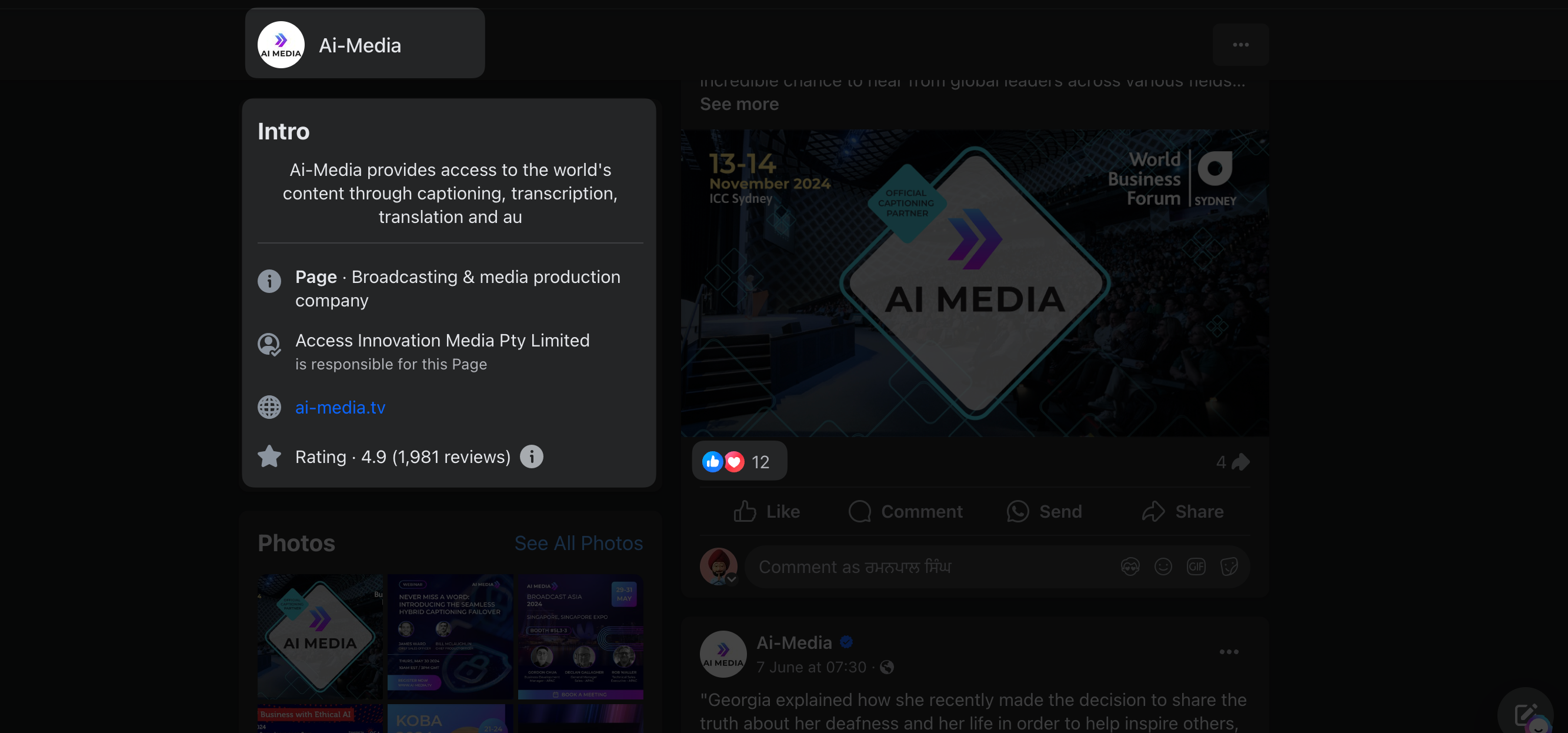
Likes and follows: Observing who interacts with your competitors’ Pages.
About sections and Page links: These areas can reveal connections to related sites and further insights.
Audience metrics: Gaining a sense of scale from follower counts, comment activity, and share volumes.
Communities: Engaging with these can offer more direct insights into audience preferences.
Diving into these dimensions not only aids in understanding how to target competitors’ audience on Facebook but also presents an opportunity to scrutinize the competitor’s content strategy.
Identifying topics that resonate and the types of products that receive the most attention enables the crafting of organic content and Facebook ads that speak directly to what interests your target audience.
Such strategic targeting enables the creation of custom audiences and lookalike audiences, optimizing your ad spend, and ensuring your marketing messages reach the right audience with interests aligned with your offering.
Create Ads That Resonate
The process illuminated thus far sheds light on the intricate technicalities of attracting a competitor’s audience on Facebook. However, the culmination of your strategy lies in crafting ads that genuinely resonate with the very audience your competitor targets.
Whether your choice of ad format leans towards the immersive Instant Experience or the more traditional news feed placements, the crux of your success hinges on content precision. Your presentation, the compelling narrative of your offering, plays a pivotal role in diverting potential customers from competitors to your doorstep.
To secure their interest, leverage the insights garnered about your target audience, infusing your ad copy with elements designed to spark curiosity and prompt action. Every advertisement you deploy should aim to:
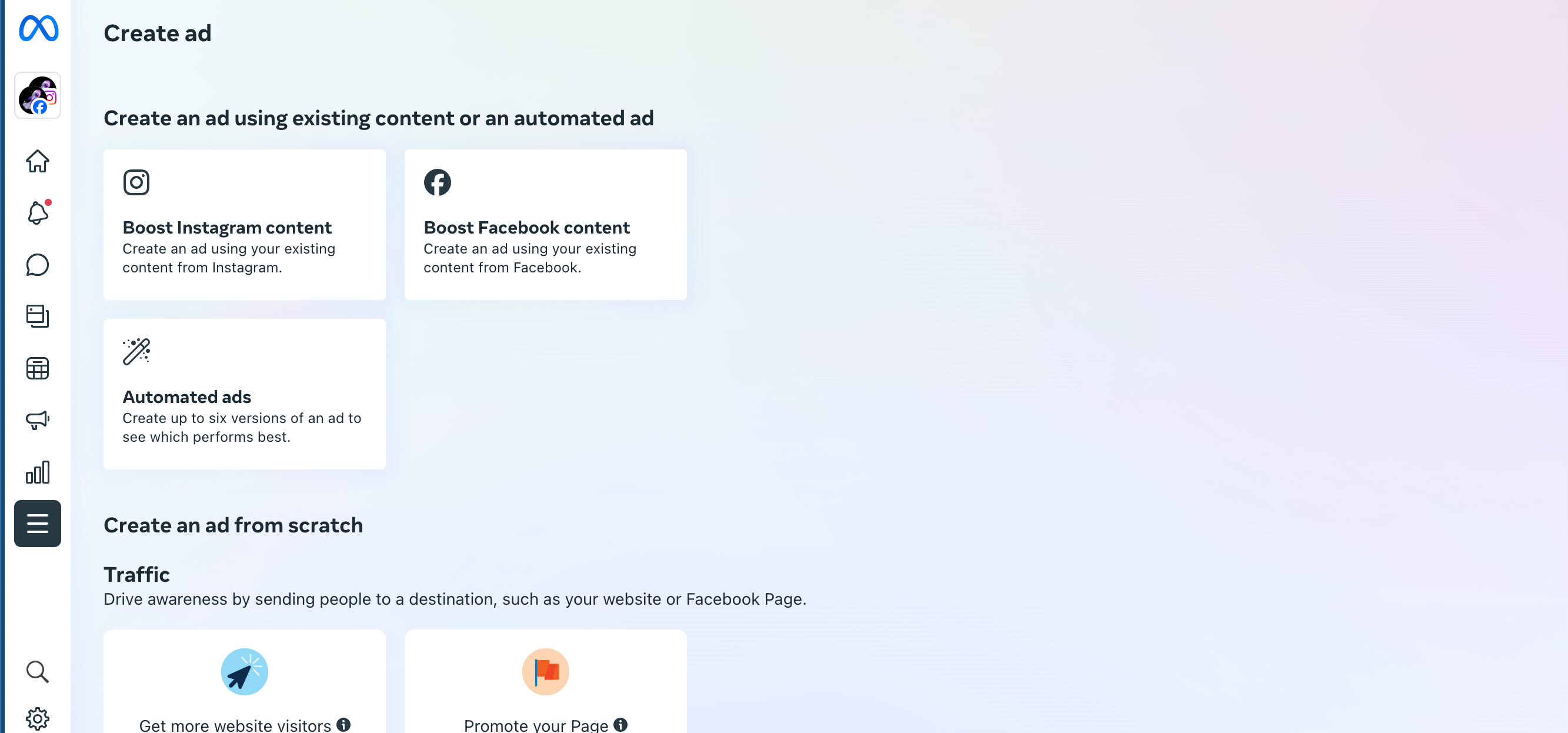
Capture Immediate Attention: Engage prospects the moment they see your ad.
Address Pain Points: Directly speak to and offer solutions for their problems, making your ad relevant and compelling.
Provoke Emotional Engagement: Connect on an emotional level to make your brand and offer memorable.
Anticipate and Address Objections: Deal with potential hesitations in your ad copy to smooth the path to conversion.
Differentiate Your Offer: Clearly articulate what sets your product or service apart from your competitors.
It’s crucial not to overlook other facets of the ad experience. The visual appeal of your ad, whether it’s through captivating video content, striking graphics, or an engaging carousel, is equally important as the message.
Furthermore, ensure that the landing page to which your ad directs aligns perfectly with audience expectations, maintaining a seamless transition that upholds interest and facilitates conversion.
This nuanced approach to ad creation encompasses not just audience targeting but extends to optimizing ad spend, refining your targeting strategy, and enhancing efficient ad delivery to not only reach but also earnestly connect with the right audience, maximizing the impact of your Facebook advertising efforts.
Use Detailed Targeting
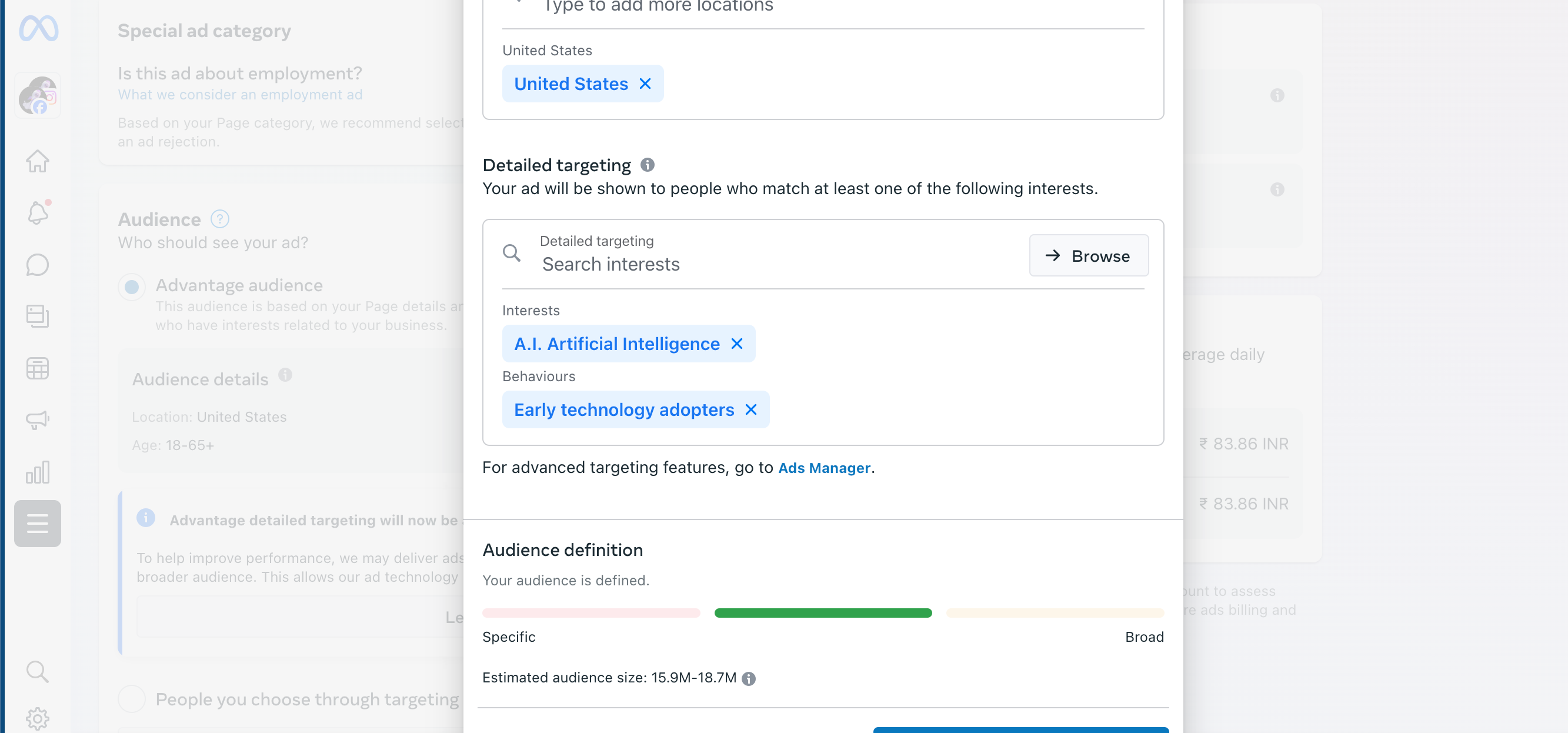
In tackling the challenge of reaching your competitor’s audience on Facebook, engaging with the Detailed Targeting options becomes imperative.
Start by leveraging the search functionality within this section, inputting keywords that encapsulate the essence of your competitor’s brand, their product offerings, and their audience characteristics.
This approach, while more expansive and potentially less precise due to Facebook’s stringent privacy regulations, represents a pragmatic pathway to audience outreach.
Opting for a single category might activate Meta’s algorithmic ad placement, but caution is warranted; a broad-strokes strategy may yield an audience too vast and undifferentiated to engage meaningfully.
Precision in audience definition is paramount—incorporate multiple facets reflective of your competitor’s audience profile to refine your target group. This refinement process might include:
Interests: Delve into both the browsing and search functionalities to pinpoint specific interests tied to your competitor’s Facebook Page or products. Direct targeting of a competitor may be off-limits, pushing you towards focusing on product-related interests as a viable alternative.
Demographics: Employ demographic filters—ranging from age brackets to gender identifiers—drawing on insights from both your own audience analysis and the intel derived from competitor research.
Behavior: For a focus on individuals who manage or own Facebook Pages, select the Behavior category and specifically target Facebook Page Admins to hone in on a niche segment.
Location: Localize your ad targeting by adding geographical parameters. This can be as precise as targeting by zip codes or as broad as targeting entire countries, with the option to refine by regions or states.
This strategy not only adheres to but enriches your advertising approach, fostering a more concentrated and effective reach towards potential customers through Facebook advertising.
By weaving in keywords such as targeting strategy, audience targeting, Facebook ads, custom audience, and detailed targeting, this guide underscores the essentials of formulating a compelling ad campaign.
Frequently Asked Questions (FAQs)
What is audience targeting?
Audience targeting is the process of selecting a specific group of people to show your ads to on Facebook. This allows you to reach a more relevant audience and increase the chances of conversion.
How do I create a custom audience for my Facebook ad?
To create a custom audience, go to your Ads Manager and click on “Audiences”. Then, click on “Create Audience” and select “Custom Audience”. From there, you can choose from options such as customer file, website traffic, app activity, or engagement on Facebook.
Can I target by interests on Facebook?
Yes, you can target users based on their interests and hobbies. This can be especially useful if your product or service caters to a specific interest group.
What is lookalike audience targeting?
Lookalike audience targeting allows you to reach new people who are similar to your existing customers or website visitors. This is done by using Facebook’s data and algorithms to find users with similar characteristics and behaviors.
Final Thoughts
Advertisers aiming to reach a competitor’s audience on Facebook employ sophisticated strategies beyond direct engagement. Leveraging Facebook’s data and algorithms, they seamlessly integrate content and ads into feeds. While creating a list of competitor followers is possible, it’s labor-intensive.
Success depends on meticulous audience research for precise targeting. Enhanced accuracy increases visits to the advertiser’s Facebook Page, enriching the overall advertising strategy.
Efficient navigation requires strategic ad targeting, audience behavior analysis, and use of Facebook’s targeting features. By mapping competitor audience interests and behaviors, marketers craft custom audiences for more efficient ad delivery, amplifying reach and connecting with potential customers effectively.
Test your knowledge
Take a quick 5-question quiz based on this page.







